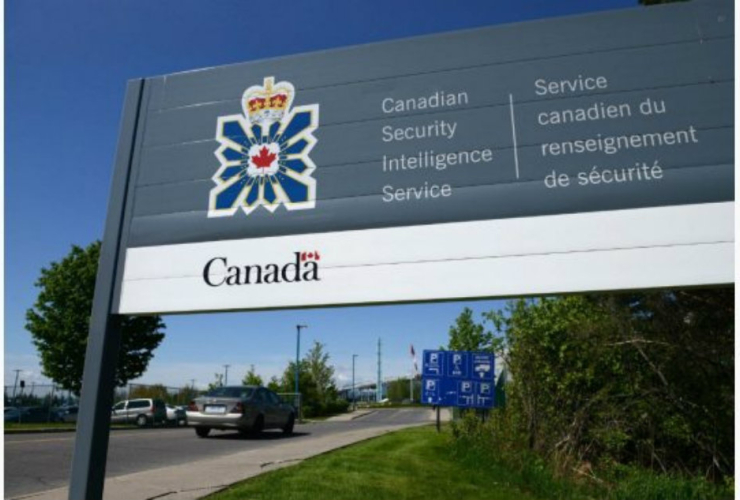An early-morning tip from FBI investigators triggered a "race against time" as police scrambled to identify and locate a balaclava-wearing would-be suicide bomber they feared was on the verge of killing innocent Canadians.
Within three hours, they believed they had found their man: Aaron Driver, 24, a known terrorist sympathizer who was living in the southwestern Ontario town of Strathroy, under court-imposed conditions.
"It was a race against time," RCMP deputy commissioner Mike Cabana told a news conference Thursday in Ottawa as he described in chilling detail the deadly events of the previous day.
"How quickly this was all established is actually testament to the level of collaboration that exists between law enforcement agencies and security agencies in Canada and the United States. Without that ... the outcome would have been quite different."
The tip included a screen shot of a "martyrdom video" of Driver, and a warning that he was planning to detonate a homemade explosive device in an urban centre during morning or afternoon rush hour, Cabana said.
"Based on the information, the attack was supposed to take place within the next 72 hours."
The warning was Canada-wide and made no mention of a specific city, said RCMP assistant commissioner Jennifer Strachan, who praised investigators for identifying Driver quickly enough to prevent him from carrying out the attack.
Several hours later, with police amassing outside Driver's house and the afternoon rush hour ramping up, a taxi unexpectedly arrived. Officers moved in when Driver, carrying a backpack, left the house and jumped into the back seat.
"Scene containment was done, and the taxi — we had no knowledge it was coming and it got in there very quickly," Strachan said.
As the officers confronted the suspect, an improvised explosive device suddenly detonated, injuring the cabbie.
Driver was killed in the ensuing fracas, either by the explosion or police gunfire, Strachan said. Police photos of the inside of the cab show how the blast ripped apart the upholstery, shattered windows and scorched the interior.
"If he had gotten out of that residence before we got there," she said, "the scenario would have ended a lot differently."
In the video, aired during the news conference, a masked Driver addresses the camera directly, speaking Arabic before an English tirade against western "enemies of Islam," including Canada and allies in Europe and the United States.
"You still have Muslim blood on your hands, and for this we are thirsty for your blood," he says.
"There's a fire burning in the chest of every Muslim, and this fire can be cooled only by the spilling of your blood. Your war on Islam is not the kind of crime we allow ourselves to dismiss, to forgive or to forget, insha'Allah."
Cabana also said Thursday that the ongoing investigation has led police to a "secondary location" in the city of London, Ont., not far from where Driver had been living with his sister in the town of Strathroy.
Driver had been under a court order not to associate with any terrorist organizations, among other restrictions. But he was not under continuous surveillance, said Cabana.
In February, Driver's lawyer and the Crown agreed to a peace bond stating there are "reasonable grounds to fear that he may participate, contribute directly or indirectly in the activity of a terrorist group."
The RCMP, the Canadian Security Intelligence Service and other police and security agencies were also involved in Wednesday's operation.
The federal Liberal government has committed upwards of $500 million towards various police, security and border control measures, as well as a counter-radicalization program ramping up this summer, said Public Safety Minister Ralph Goodale.
"Canada, obviously, is very anxious to maintain the open, inclusive and generous nature of our country," Goodale told a news conference in Regina.
"In order to do that, we have to be among the best in the world at identifying those who are vulnerable to the insidious messages of radicalization; we have to find the means ... to reach out to those who would be vulnerable, and to find the ways effectively to intervene with the right people at the right time with the right messages, to try to head off these tragedies before they occur."
Prime Minister Justin Trudeau expressed his gratitude via Twitter: "On behalf of Canadians, we thank the @rcmpgrcpolice for their work in Strathroy yesterday," Trudeau wrote. "Your service ensures our safety each and every day."
In Strathroy, a neighbour of Driver's said he couldn't recall ever seeing the man around town. But he said Wednesday's incident — and the discovery that a terror suspect lived only a stone's throw away — hit "a little too close to home."
"For me, having two kids and my wife and a possible terrorist ... sympathizer down the street, it's kind of ... it's a little crazy."
Last year, federal authorities were so suspicious Driver might have ties to a terrorist group that he bounced in and out of jails and courtrooms for months, all without any actual charges ever being laid — and he had no criminal record at the time.
In June 2015, Driver was first picked up in Winnipeg. Published reports at the time suggested Driver posted messages on social media that praised terrorist activities, including the attack on Parliament Hill in October 2014 by Michael Zehaf Bibeau.
Amarnath Amarasingam, a post-doctoral fellow at Dalhousie University who studies radicalization and terrorism, maintained in 2015 that Driver posted for several months on social media about disliking Canada and about a desire to move overseas.
Mounties applied for a peace bond that could impose limits on Driver's activities, alleging in provincial court documents that investigators believed he might help with terrorist group activities.
When Driver was released later that month, he was ordered to comply with 18 different conditions, including wearing a GPS tracking device.
— With files from Paola Loriggio in Strathroy, Ont.






Comments